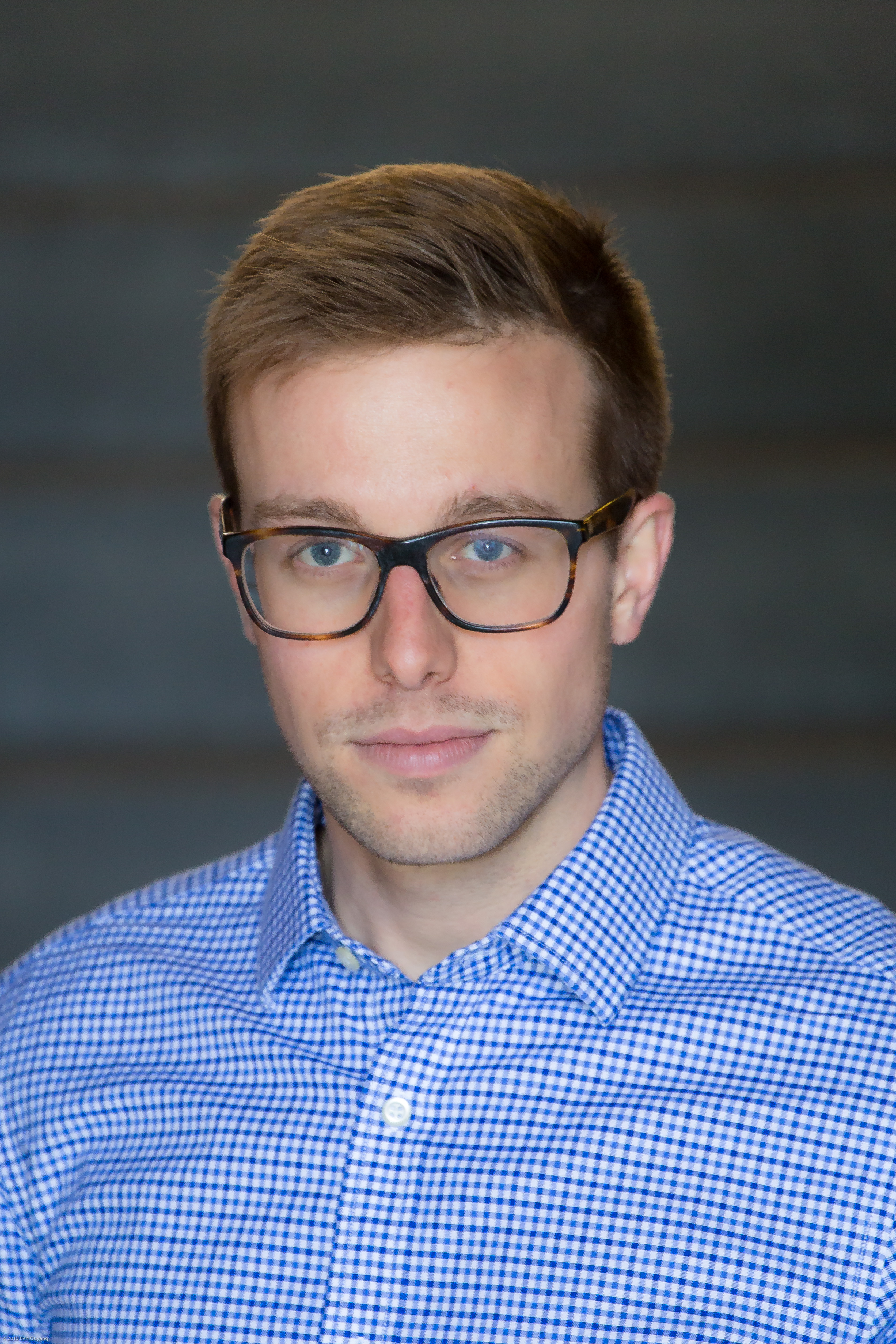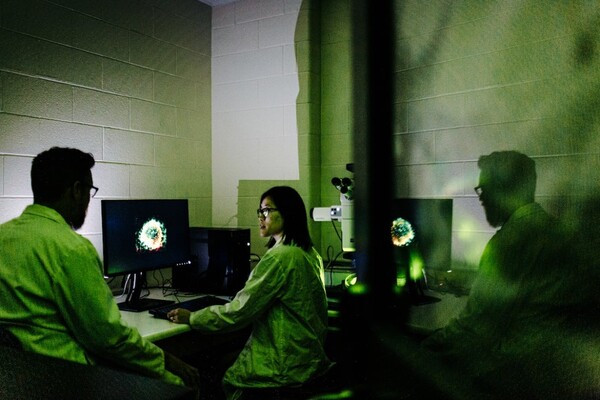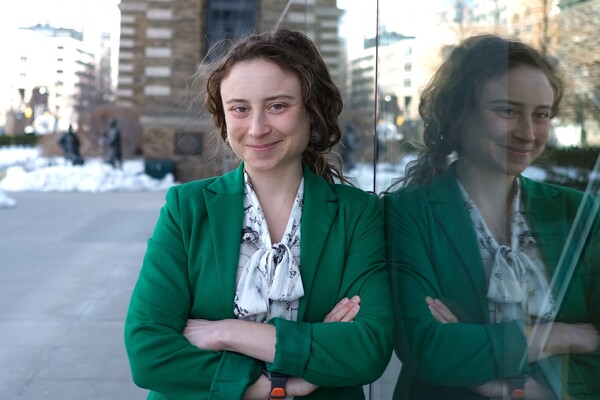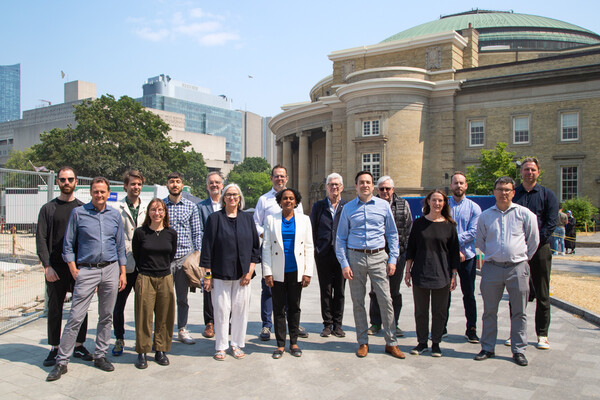Faces of U of T Medicine: Kyle Eastwood

 MD/PhD student Kyle Eastwood is developing a new approach to treating epilepsy through non-invasive brain surgery, which would result in a faster recovery period. His interest was piqued by curiosity about the brain and an engineer’s love for solving complex problems. For this achievement, Eastwood was presented with Mr. Robert and Ms. Francine Ruggles Innovation Award. He was also named a 2015 Vanier Scholar. He spoke to us about his work.
MD/PhD student Kyle Eastwood is developing a new approach to treating epilepsy through non-invasive brain surgery, which would result in a faster recovery period. His interest was piqued by curiosity about the brain and an engineer’s love for solving complex problems. For this achievement, Eastwood was presented with Mr. Robert and Ms. Francine Ruggles Innovation Award. He was also named a 2015 Vanier Scholar. He spoke to us about his work.
Name: Kyle Eastwood
Program/Year: MD/PhD Program, PhD Phase Year 3
Role/Position: Graduate Student with IBBME working at The Hospital for Sick Children
You were recently recognized with the Mr. Robert and Ms. Francine Ruggles Innovation Award for your work on non-invasive brain surgery for patients with epilepsy. Tell us about it.
I was incredibly honoured to have received the award this year for my work in developing a novel approach to treating medically refractory (drug resistant) epilepsy through minimally invasive surgery. Seizures are the most commonly occurring neurological disorder affecting children, with one in 100 children ultimately diagnosed with epilepsy. Approximately one-quarter of this group are unable to attain adequate seizure management with medication alone and must seek surgical treatment. Epilepsy surgeries are intended to isolate the epileptogenic (seizure generating) zone of the brain by physically disconnecting the white matter tracts that originate from this space. Current surgical techniques involve a relatively large exposure of the surface of the brain and significant dissection to reach the affected areas. There has been growing interest in adopting current neurosurgical ‘key-hole’ approaches to modify this procedure, and to significantly reduce its invasiveness. However, the neuroendoscopic instruments currently being used (as these ‘key-hole’ tools are called) have difficulty reaching the surgical targets with their shape and design.
Using a patient-driven approach, I am developing surgical instruments with increased range of motion (that are compatible with standard equipment) to address this reachability problem. Through the use of an image library of epilepsy patient anatomy, my collaborators and I are designing adaptable instruments with a range of motion and shape specifically designed for minimally invasive epilepsy surgery. This work represents a multidisciplinary collaboration between neurosurgeons and researchers from the Hospital for Sick Children and engineers and faculty members from the University of Toronto.
What drew you to this field?
In other regions of the body, such as the pelvis, abdomen or chest cavity, minimally invasive surgical procedures are widely used. Procedures that once required large incisions and days of recovery are now performed through holes the size of small coins with patients returning home in a day or less. There is a broad assortment of instruments and tools that provide surgeons access to these deep body spaces to perform procedures. However, adapting these tools to the small space of the skull cavity has been challenging, and far fewer tools exist in neurosurgery. In fact, tools for neurosurgery are often only one-quarter the size of a regular laparoscopic tool, which poses immense challenges to the design and manufacturing of such miniature equipment. My prior training as a mechanical engineer helped develop my curiosity and love of solving complex problems. I was particularly drawn to developing novel instruments for minimally invasive neurosurgery because of the intricacy involved, and the immense advantages that would be experienced by patients if such problems were solved.
What do you hope to accomplish?
Many epilepsy surgeries are not curative, but they can provide much needed seizure relief for patients, significantly improving their quality of life. The stress placed on the body during an operation and the time required for recovery is significant. Further, the need for re-operation is not uncommon. These obstacles can be terrifying and overwhelming for patients and their families. I hope to reduce the burden of some of these issues by reducing the trauma induced during operation.
How has this experience affected your long-term career plans?
The experiences and opportunities that I have gained through this particular project have strengthened my interests in pursuing a surgical specialty in my future career. I am particularly interested in neurosurgery and the other cranial-based specialties because of the immense opportunities still present for innovation within these areas. I am excited to become a surgeon-scientist that can translate clinical needs from the bedside into practical solutions in the engineering laboratory.
What is your favourite thing about the Faculty of Medicine?
One of the things that I value the most about the Faculty of Medicine is the incredible support and encouragement that I have received from the administrative staff at the Mississauga Academy of Medicine, the Medical Society, the MD-PhD program and within the Institute for Biomaterials and Biomedical Engineering. There have been many questions, obstacles and challenges that I have faced both as a medical student and as a graduate student; my accomplishments are a tribute to their kindness and the time and effort they have given to help me. I am also especially proud of being an MD/PhD student. The combined medical degree / PhD is a fantastic opportunity to facilitate my education as both a future surgeon and future scientist.
Faces of U of T Medicine introduces you to some of the interesting men and women studying in the Faculty of Medicine. From advising political leaders to providing care to Toronto’s most vulnerable populations, our students are making an impact on communities at home and around the world. Do you have an interesting story to share? Contact medicine.communications@utoronto.ca.
News


